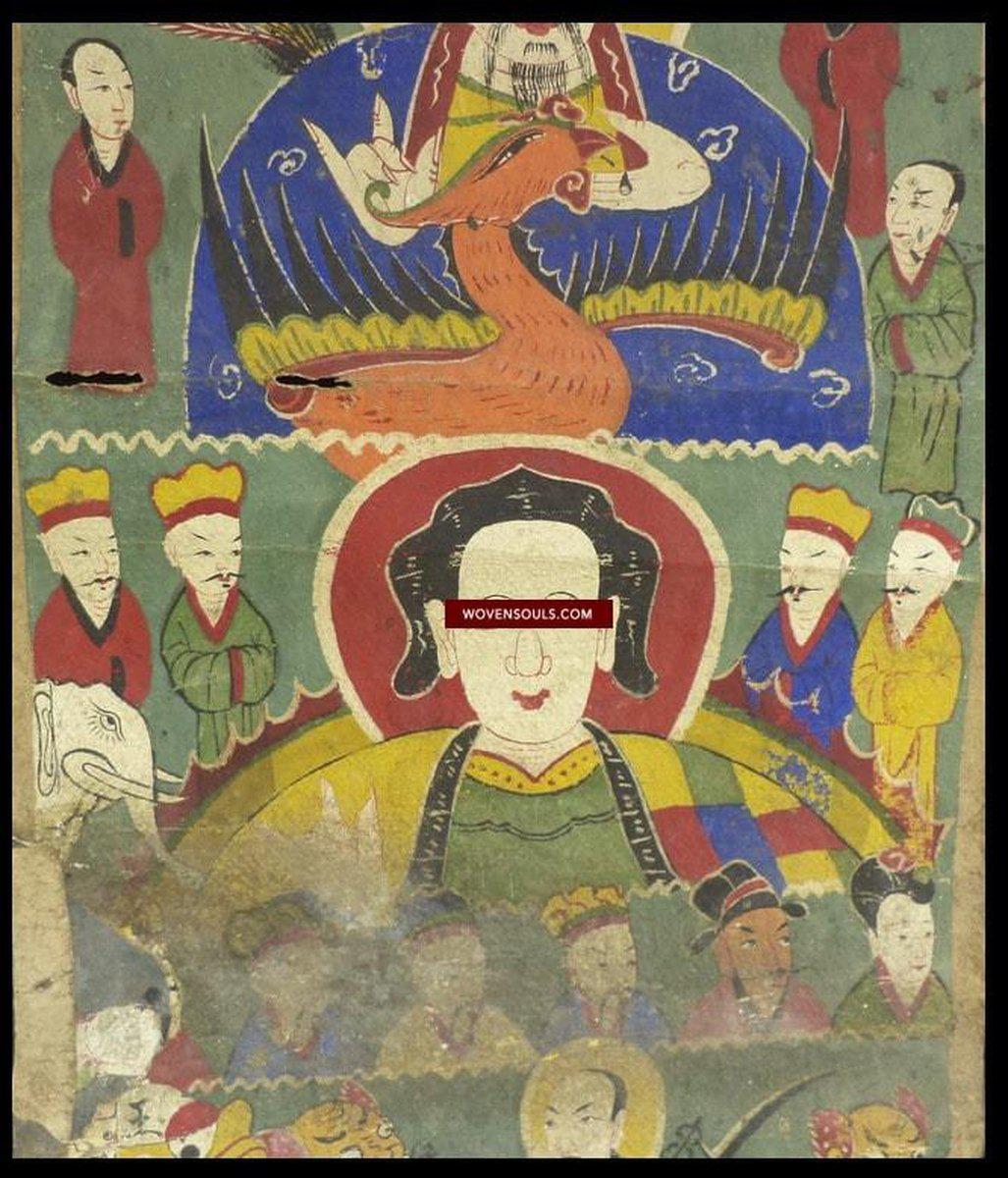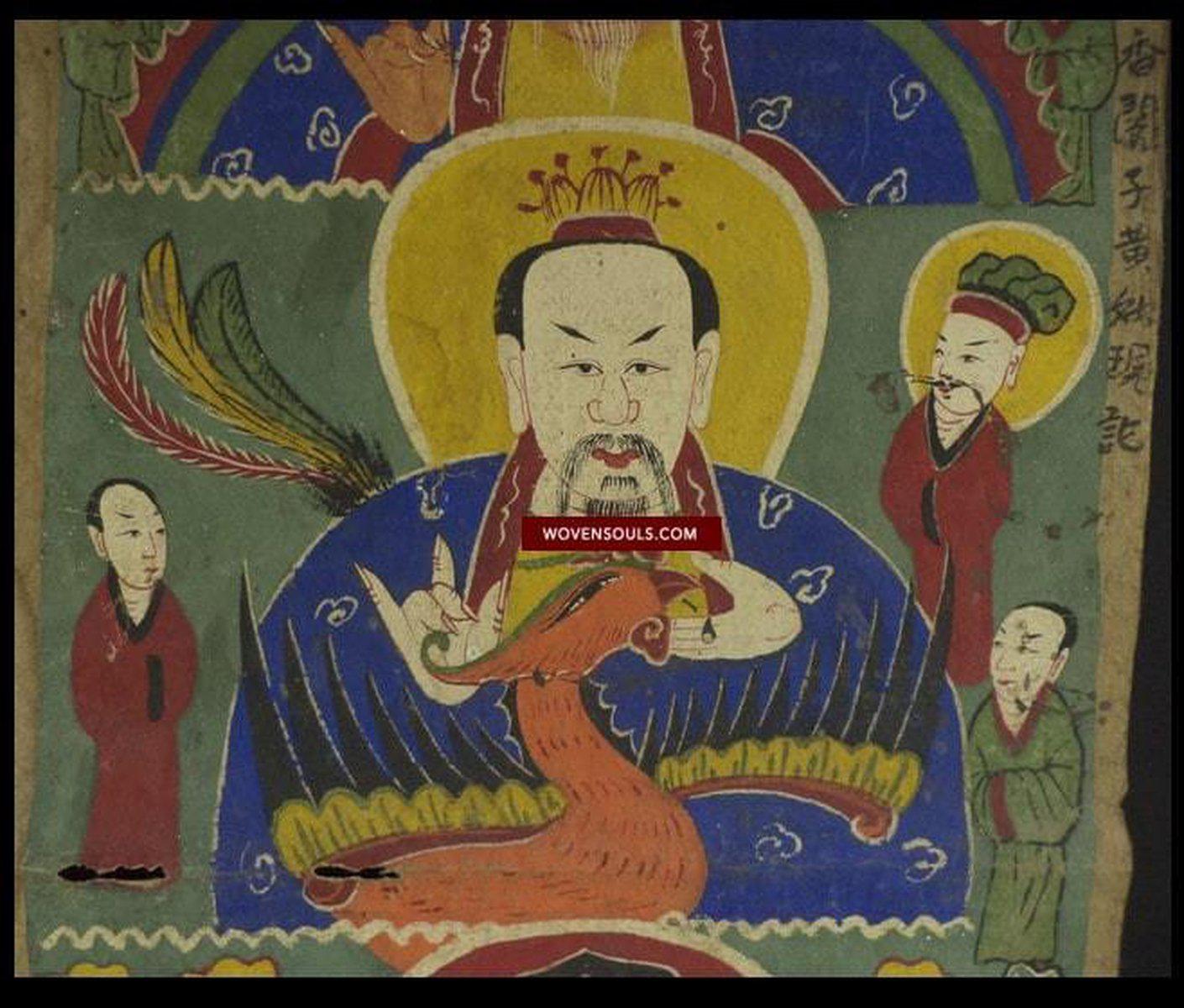1046 Antique Ceremonial Cao Lan Painting Scroll
Rare Antique Ceremonial Cao Lan Painting Scroll from Vietnam
This is one of the set of 4 paintings that are very rare with two characteristics that make them unique.
First, the blue background is seen only in a handful of ceremonial paintings. These are highly prized finds for their rarity as well as their aesthetic value.
Second, the painting style is very unique - there are characters on a plain background without any embellishment of the background. These are works of 'naive' art. It could be that he had not yet come within the folds of influence of the styles that were popular elsewhere and his personal style remained uncorrupted by the 'popular' view. As a result the artist we see the stamp of his own soul on the painting, rather than just that of his ethnic group. And it is this soul-stamp that makes this set of 4 pieces extremely charming.
Subject: Palace of the Grand Pure One, Daoist Painting on Paper
This folk rendering of the Palace of the Grand Pure One demonstrates the strain of Daoism which binds with Buddhism. These paintings come in sets of three with the other two being The Palace of the Supreme Pure One and the Palace of the Jade Pure One. Collectively, these are the highest deities in the Dao pantheon. Collectively, these are the Three Pure Ones who are responsible for creation. In this representation we find the Bodhisattva Samantabhadra, linked to great vows and action. Beside him is his steed, a white elephant.
The piece comes from the north of Vietnam from ethnic minorities (Yao, Tay, Nung, Cao Lan, San Chi) whose belief system often mixes Daoism with elements of Buddhism, Confucianism and animism.
25 x 12 inches.
There is age related wear and fading.
Estimated to be from the mid 1900s
***
This is one of a set of 4 paintings - the others are 1047, 1048 & 1049
UPDATE: I learnt from a reader that these are Cao Lan paintings from Vietnam.
***
This item has spent a lifetime being used for the purpose of its creation with the original artist/user. Signs of this life lived heartily may be present on the piece in the form of stains, thread loss, loose threads, holes, tears, color run and other imperfections. Therefore the condition must be assumed to be “not” perfect. More photos of such imperfections will be provided on request.
***































